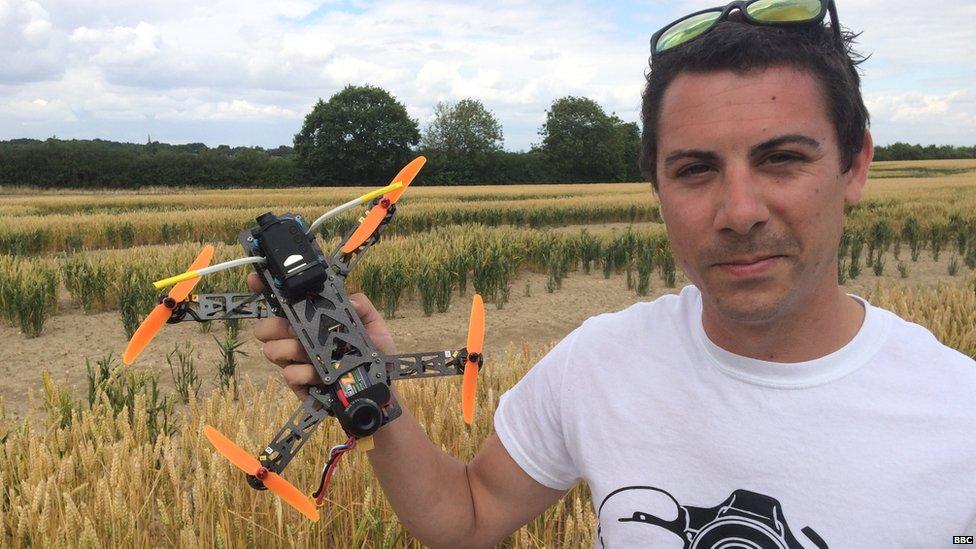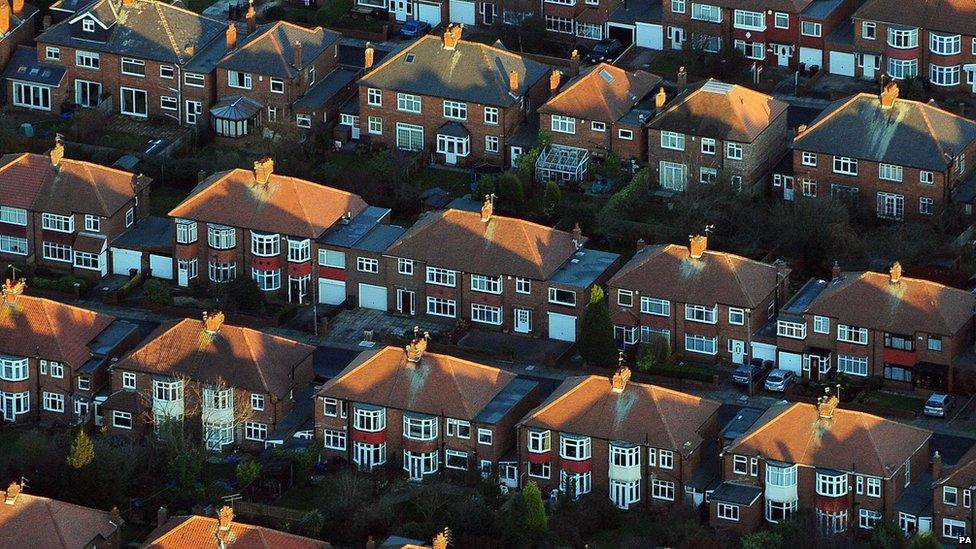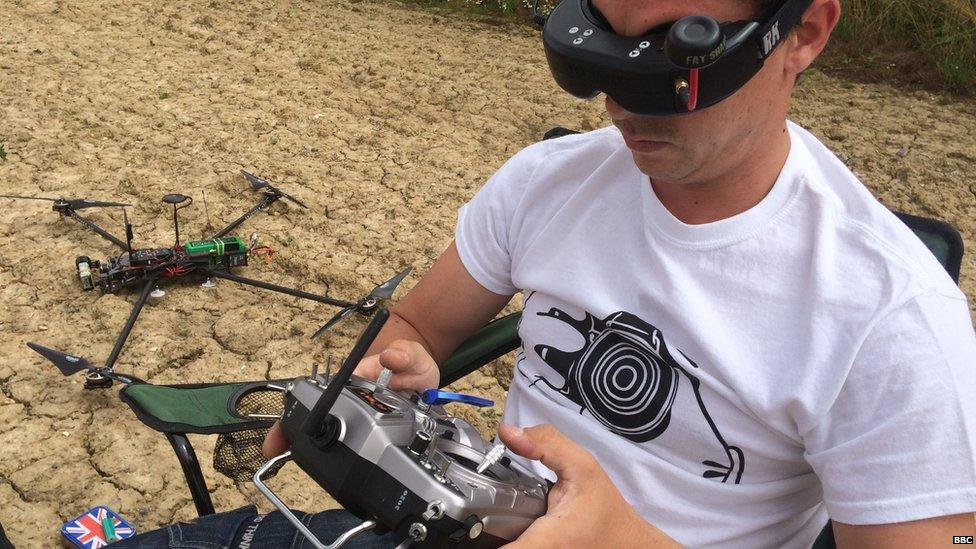What is the 'dronecode'? Rules on flying safely and legally
- Published

Drone owners are being reminded about how to fly without breaking the law.
The UK Civil Aviation Authority (CAA), which looks after airspace safety, has a set of rules called the "dronecode".
Drones and aircraft have nearly collided on seven occasions at UK airports between May 2014 and March 2015, the CAA says.
In one case a plane's wing came within six metres of a drone at Heathrow Airport.
"There's potential if a small craft made of steel and carbon fibre and aluminium got into an engine, it could potentially down an aircraft," drone owner Lee Butler tells Newsbeat.
"I think the results would potentially be disastrous."

Lee, who's 29 and from Essex, says the vast majority of people who own the devices are responsible.
"I think some people break the height limit. I haven't personally because 400ft is easily high enough for me. Everything I need to do is well within the law," Lee tells Newsbeat.
'Dronecode'
The code, external has some simple rules for drone pilots to follow.
- Don't fly higher than 400ft - that's about 122 metres (to put that into perspective, St Paul's Cathedral in London is 111 metres tall).
- Make sure you can see your drone at all times.
- Always keep your drone away from aircraft, helicopters, airports and airfields.
- Use your common sense and fly safely.
- Drones with cameras must not be flown within 50 metres of people, vehicles, buildings or structures.
- Drones with cameras also must not be flown over congested areas or large gatherings such as concerts and sports events.
The CAA warns that people could be prosecuted under the Air Navigation Order.
It says that recklessly endangering an aircraft in flight is a criminal offence that carries a possible prison sentence.
Do you need permission to fly?
If you're making money from flying the drone (and are trained to do so) then you have to get permission from the CAA.
You also need to contact the CAA if your drone has a camera and you're flying it in busy areas or close to people and buildings that aren't under your control.
You should also consider the weight of your drone - if it's more than 20kg you have to get permission to fly it.

The drone code says to not fly higher than 400 feet (122 metres)
Data protection
If your drone has a camera then you need to think about data protection law.
The Information Commissioner's Office (ICO) has some tips, external on how to use your drone responsibly and without invading people's privacy.
It advises you to try and let people know that you're recording and to think about your surroundings, such as whether there are other people's homes or gardens nearby.
It also says get to know your camera and what it's able to do, and plan your flight path.
Lastly, it reminds people to keep any footage safe and think before you share it online.

Lee controlling a drone and viewing the video images it sends on his goggles through the device's 'eyes', it's cameras
Lee believes the "dronecode" rules are strong enough to regulate the growing industry.
He adds: "It's like cars. People break the speed limit and they drive recklessly, but we don't punish the whole driving community for that."
Watch the CAA's video guide to drone flying., external
Follow @BBCNewsbeat, external on Twitter, BBCNewsbeat, external on Instagram, Radio1Newsbeat, external on YouTube and we're now on Snapchat, search for BBC_Newsbeat